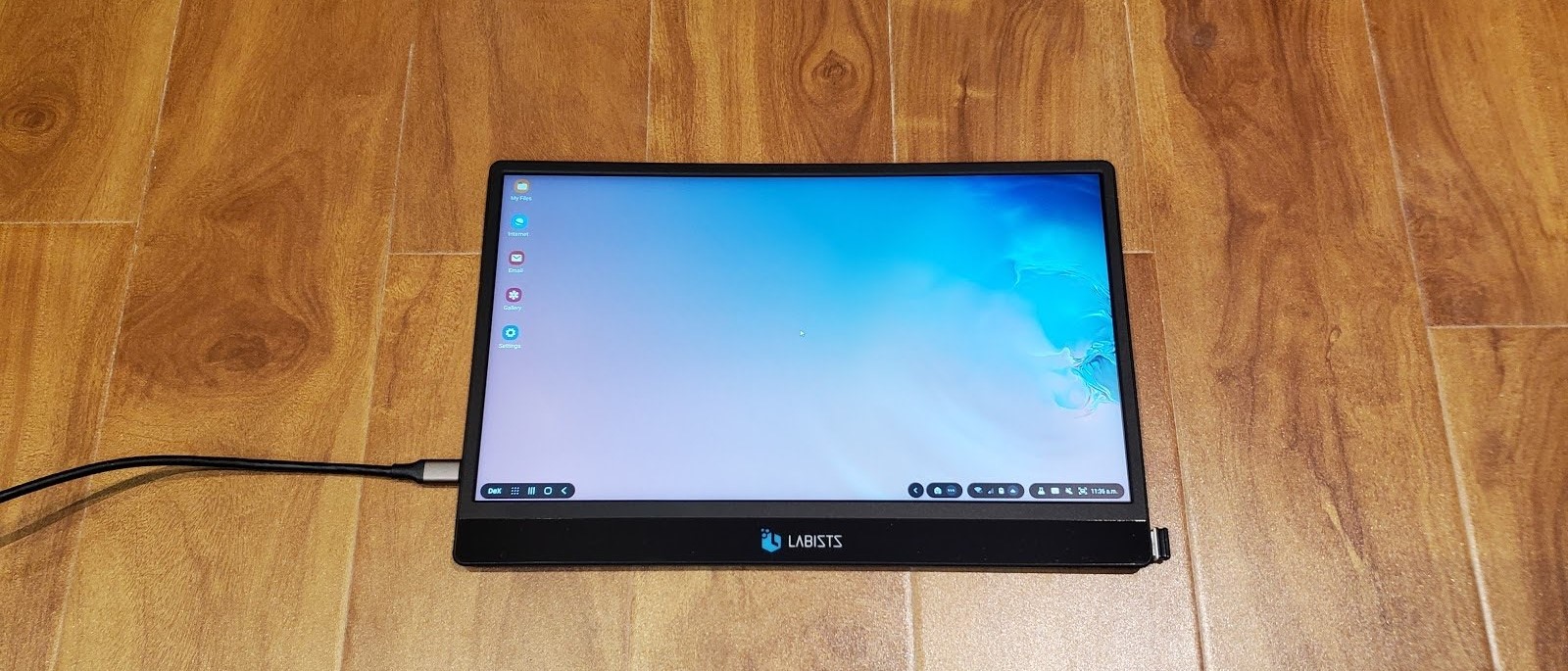TechRadar Verdict
Don’t let the price of this cheap portable display fool you. The Labists X0016P42HD is a quality screen with a good amount of connectivity and features. The only unknown remains long term reliability, something that can only be discovered in a long term test.
Pros
- +
Very cheap
- +
Good amount of accessories
- +
HDR and FreeSync
- +
Good LCD specifications
Cons
- -
Subpar loudspeaker quality
- -
USB 2.0 host connector
- -
Confusing menu navigation
Why you can trust TechRadar
Portable monitors and more specifically external USB displays have seen their popularity explode thanks to the current pandemic that has forced millions to work from home. Being able to have a small secondary display is known to increase productivity. The billionaire founder of Microsoft, Bill Gates, is famously known for extolling the values of multi monitors and a portable monitor display does just that.
Labists known for their Raspberry-PI kits and low-cost 3D printers have extended their product line with the addition of portable displays. Their 13.3” monitor (X0016P42HD) is a classy one capable of extending a workspace seamlessly. Connection to a host is done either using USB Type-C or HDMI. The built-in hub adds an extra USB High-Speed port while the integrated Power Delivery enables charging connected devices.
Price
At a special price of $89.99 on their Amazon store after applying a $79 coupon (MSRP $168.99), the LABISTS X0016P42HD portable USB monitor is easily the cheapest display in its category, filling the much-needed gap of affordable compact displays.
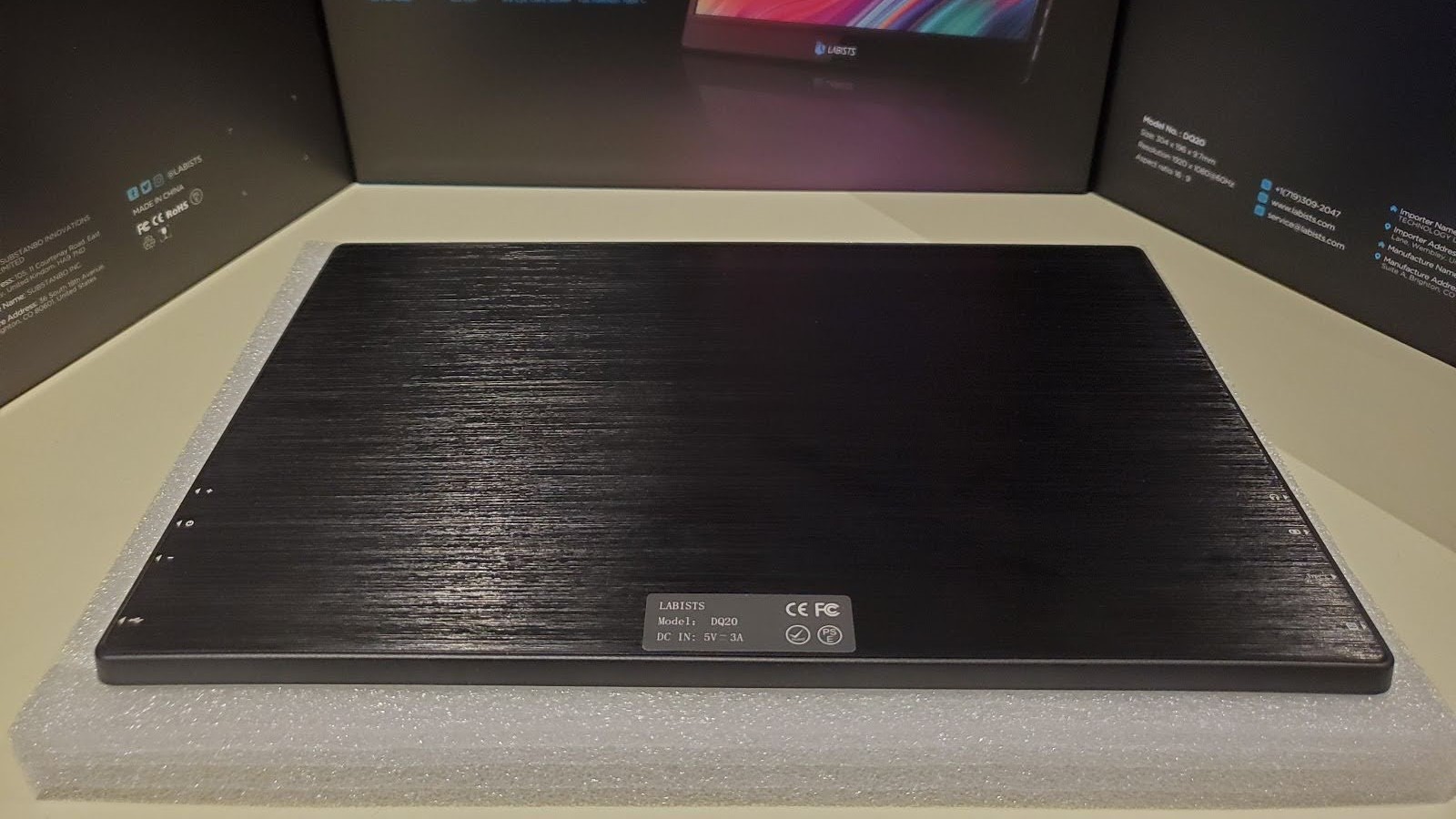
Design
The monitor is light but well-built. It is thin enough at 9.7mm while not being flimsy, thanks to a metal backplate. The 6mm screen bezel along with a matte LCD surface gives a professional look. Integrated magnets located at the back hold the screen securely to the supplied leather cover.
The X0016P42HD allows for outdoor use, a consequence of the good contrast specification, while also possessing little backlight bleed. It comes with various cables and accessories and is well packed.
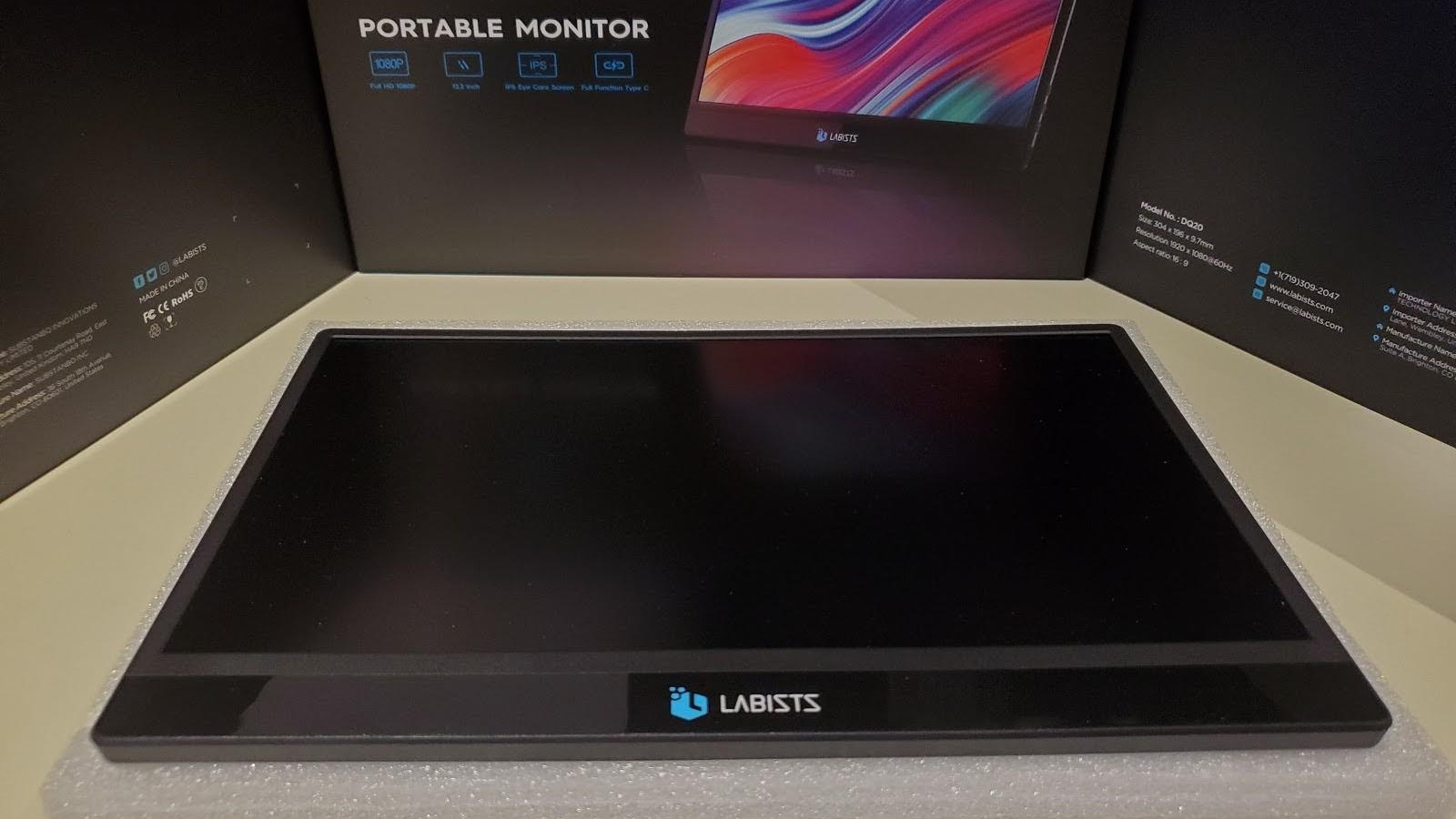
The black plastic display has a brushed metal backplate for an overall weight of 630g. The 16:9 aspect ratio gives a comfortable landscape viewing. With a Full-HD resolution and a refresh rate of 60Hz, the display is comparable to that of a laptop.
The provided sample had a panel with a luminance of 220cd/m2, a contrast of 700:1 and a 166PPI pixel density. The response time is also typical of a laptop at 4ms. Last but not least, the Labists monitor guarantees vibrant colors and wide viewing angles by virtue of being IPS.
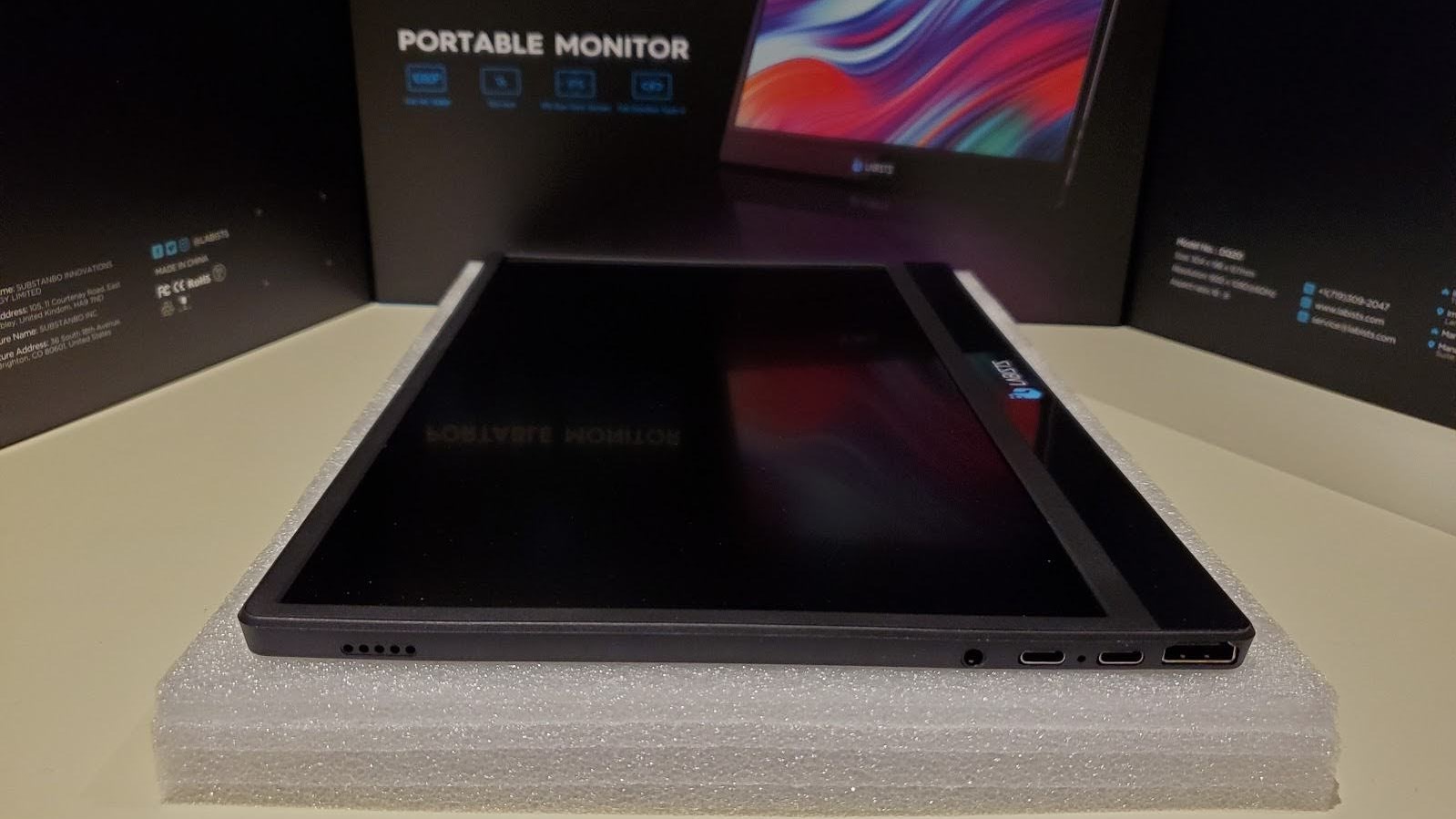
There are three display connectors all located on the bottom left side; Two USB Type-C over which the alt-display port mode is supported and one full-size HDMI 1.4.
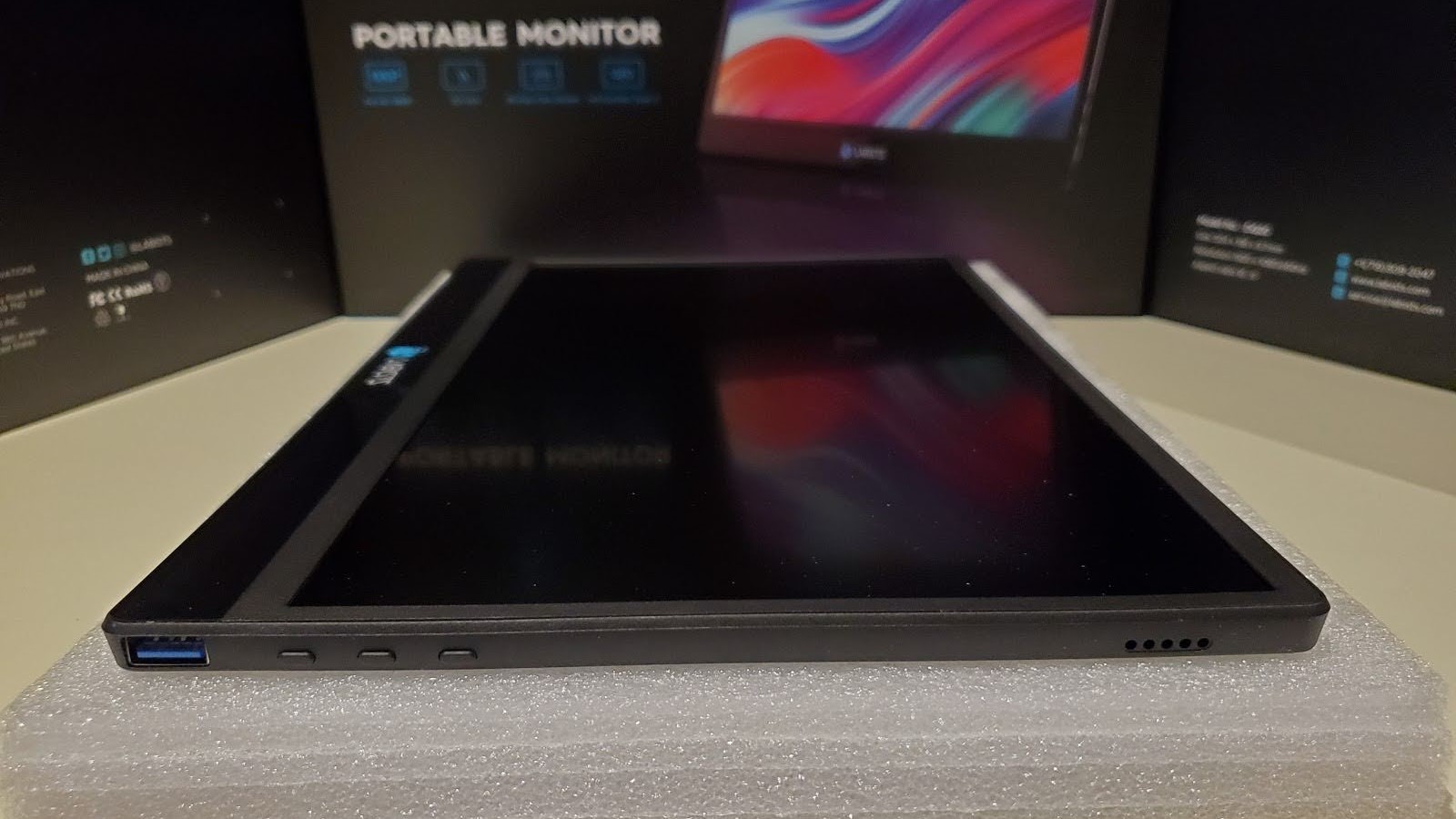
The bottom right side reveals three menu control buttons and the only USB Type-A Host connector. The latter is blue color-coded but only supports USB HS.
Accessories provided are one Type-C to Type-C USB data cable, one Type-A to Type-C USB power cable, one HDMI cable, a 15W (5V,3A) power adapter, a plastic stand and a leather cover.
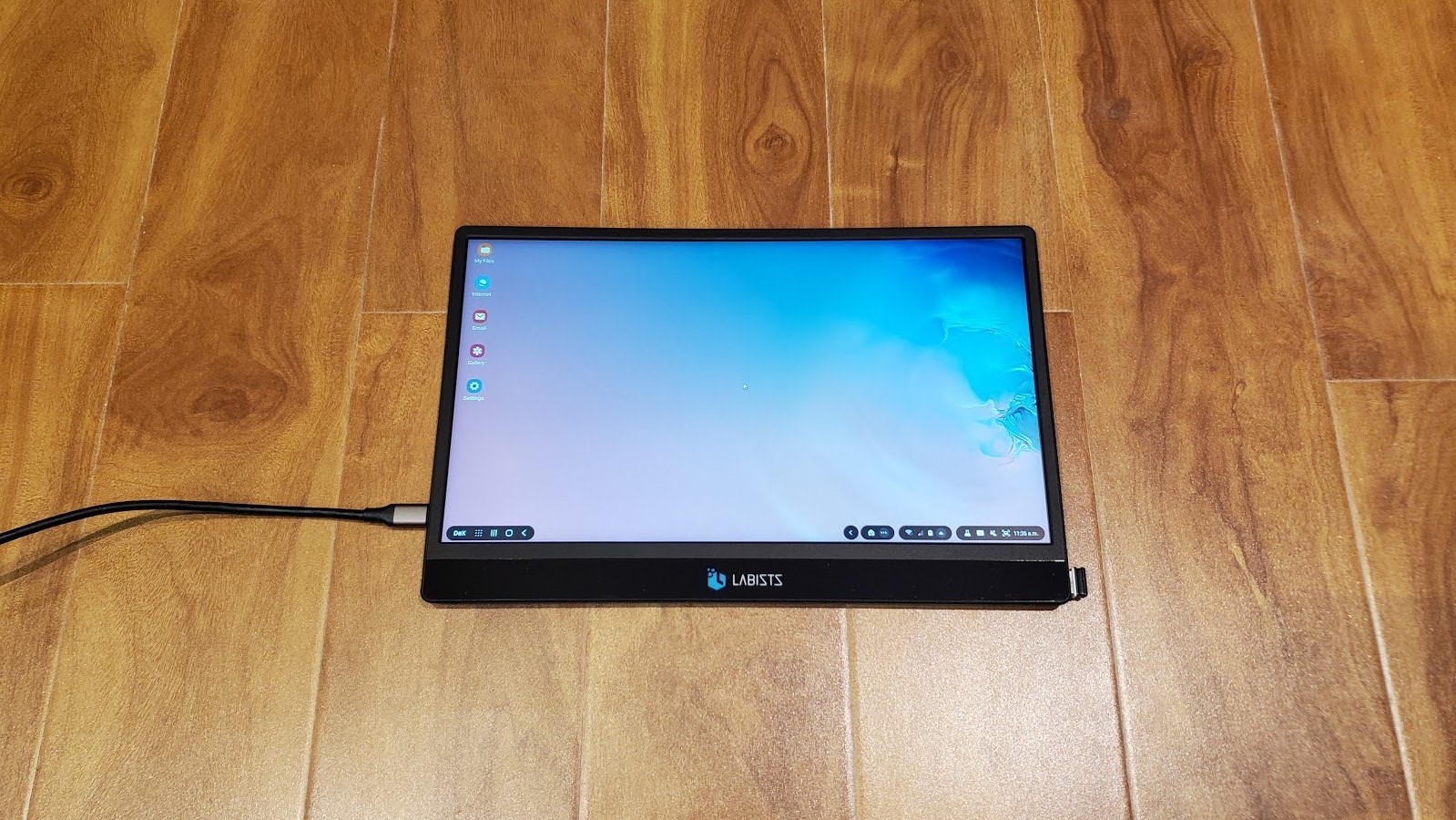
In use
The display is intuitive enough to be used without reading the manual. Icons embossed in the backplate help identify connectors. A bicolor LED located on the left gives the display’s status. Green indicates that a video source is detected and red indicates none.
Under normal operation, a supplied AC adapter powers the display which connects to the host through a USB data cable. This can be seen as a docking-station mode, where the display acts as a hub, providing power and acting as a video sink. In addition, the display can also be powered by the host, hence requiring only one connection for both power and video. A Samsung smartphone and a MacBook Pro laptop were tested and had no problem detecting the display.
The user-interface consists of an on-screen menu controlled by three buttons. Two of the buttons, when pressed individually, serve as volume control. When used with the middle button, they control the navigation of the menu. This allows the user to set standard features of the display such as brightness and contrast or to rotate the screen 180 degrees.
Several presets including gaming, text and movie are available to match the characteristics of the screen to the displayed content. HDR and FreeSync modes usually found in high-end displays are also listed and will adjust settings automatically depending on the video content.
Any of the three video sources can be selected as input through the on-screen display menu. The automatic mode allows the first connected display to be chosen. At any time, the user can override settings which are saved to non-volatile memory.
The screen boots in less than five seconds while displaying the Labists logo and goes to power-save mode with the LCD turned off when no input signal is detected. The loudspeaker quality is somewhat muffled and lacks bass. It is adequate for watching movies or listening to Podcasts but definitely not for music.
The competition
There are plenty of portable Full-HD displays available on the market. Big names such as Asus and Acer offer their own versions but don’t come cheap. The Asus ZenScreen MB16ACE is a 15.6” with similar specifications as the Labists but offers only one video input and no audio output while costing $229. The same goes for the $179.99 Acer PM161q portable monitor that sells without those two features. Other less recognized brands include Uperfect, Corprit and Szoon. They are all 13.3” displays with similar features namely at least two video inputs and an audio-out but are more expensive.
Final verdict
The Labists 13.3” portable monitor makes working in a small space a breeze. Based on the latest technology in terms of connectivity, it solves the problem of cable overload through USB Type-C, the one cable to rule them all. It adapts well to all sorts of usage such as being a digital hub or just a regular screen while the main selling point remains its low price. With a decent LCD panel and good build quality, the X0016P42HD will remain a sound investment in these harsh times.
- We've also highlighted the best portable monitors

Désiré has been musing and writing about technology during a career spanning four decades. He dabbled in website builders and web hosting when DHTML and frames were in vogue and started narrating about the impact of technology on society just before the start of the Y2K hysteria at the turn of the last millennium.
